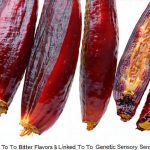Our relationship with food is deeply personal, extending far beyond mere sustenance. What we choose to eat, how we experience flavors, and even what textures appeal to us are all shaped by a complex interplay of cultural influences, emotional connections, and – crucially – our individual digestive systems. Often overlooked in the grand scheme of culinary enjoyment, digestive health is profoundly linked to taste preferences. The seemingly simple act of choosing between sweet, sour, bitter, salty, or umami isn’t just about what tastes “good”; it can be a signal from your body responding to its internal needs and limitations. Understanding this connection allows for greater self-awareness regarding our dietary choices and potentially optimizing overall wellbeing.
Taste preferences aren’t static; they evolve over time, influenced by factors like age, hormonal changes, stress levels, and even medication. However, persistent or dramatic shifts in what we crave – or conversely, intensely dislike – can be particularly telling. For example, a sudden aversion to previously enjoyed foods might indicate developing sensitivities, while an overwhelming desire for specific items could point towards nutrient deficiencies or imbalances within the gut microbiome. This isn’t about assigning blame or rigidly adhering to dietary rules; it’s about recognizing that our bodies communicate through these preferences and using that information to make informed decisions about what we consume. It’s a form of internal listening, tuning into the subtle cues your digestive system is sending you. You can learn more about what your poop can reveal about your digestion and how it relates to overall health.
The Gut-Taste Connection: A Two-Way Street
The connection between taste and digestion isn’t one-directional. While our tastes influence what we eat, the state of our gut profoundly affects how we perceive flavors. This intricate relationship begins even before food enters our mouths – with anticipation. Simply thinking about a favorite food can trigger salivary glands to prepare for digestion, while unpleasant thoughts can suppress these processes. Once food reaches the mouth, taste buds relay information to the brain, initiating enzymatic breakdown and preparing the digestive system for action. But it’s what happens after swallowing that truly highlights the gut-taste link.
The gut microbiome – the vast community of bacteria residing in our intestines – plays a surprisingly significant role in flavor perception. These microbes don’t just digest food; they actively communicate with the brain via the gut-brain axis, influencing mood, behavior, and even taste preferences. Certain bacterial strains thrive on specific nutrients, and their metabolic byproducts can influence the signals sent to the brain, shaping our cravings and aversions. For example, an imbalance in gut bacteria (dysbiosis) has been linked to altered taste perception, potentially leading to increased sugar cravings or reduced sensitivity to bitter flavors. This is because certain bacteria ferment sugars quickly, creating a reward cycle that reinforces sweet food consumption. Understanding gut tests can help you understand your gut microbiome better.
Furthermore, the health of our intestinal lining directly impacts nutrient absorption and overall digestive efficiency. A compromised gut barrier – often referred to as “leaky gut” – allows undigested food particles and toxins to enter the bloodstream, triggering inflammation and potentially altering taste perception. This can lead to sensitivities or intolerances that manifest as sudden changes in preferences. Ultimately, a healthy gut fosters balanced flavor perception and efficient digestion, while an unhealthy gut can distort both. You might also find it helpful to explore what a SmartPill can show about your digestion.
Identifying Digestive Issues Through Taste Aversions
Taste aversions aren’t always about disliking the food itself; they can be indicators of underlying digestive issues. While general pickiness is common, sudden and intense aversion to foods you previously enjoyed warrants attention. Here are some examples:
- Fat intolerance: A strong dislike for fatty foods (like avocado or fried items) could signify difficulty digesting fats, potentially due to gallbladder issues or pancreatic insufficiency. This isn’t necessarily a diagnosis, but it’s a signal to investigate further with a healthcare professional.
- Lactose Intolerance: Aversion to dairy products is often linked to lactose intolerance, where the body lacks sufficient lactase enzymes to break down lactose (milk sugar). Bloating, gas, and diarrhea after consuming dairy are common accompanying symptoms.
- Gluten Sensitivity/Intolerance: A strong aversion to gluten-containing foods (wheat, barley, rye) could indicate a sensitivity or intolerance, even without a formal celiac disease diagnosis. Symptoms may include bloating, fatigue, and digestive discomfort.
It’s crucial to remember that these are potential indicators, not definitive diagnoses. A healthcare professional can conduct appropriate testing to determine the underlying cause of taste aversions and recommend suitable interventions. Don’t attempt self-diagnosis or drastic dietary changes without consulting a doctor. Consider keeping a food diary alongside symptoms to help identify patterns and share with your practitioner. Learning what your stool test can actually tell you about your health may also be helpful in identifying issues.
The Craving Conundrum: What Do They Tell Us?
Just as aversions can signal digestive problems, cravings can provide valuable insights into nutritional deficiencies or imbalances. However, decoding cravings is more complex than simply attributing them to lacking vitamins or minerals. Emotional factors, stress, and habit play significant roles. Nevertheless, persistent cravings for specific foods might indicate underlying needs.
- Salty Cravings: Frequent craving for salty snacks could suggest dehydration, electrolyte imbalance (sodium, potassium), or adrenal fatigue. It’s important to differentiate between a genuine need for electrolytes and simply enjoying the taste of salt.
- Sweet Cravings: While often associated with emotional comfort, persistent sweet cravings can also indicate blood sugar imbalances, insulin resistance, or deficiencies in certain nutrients like chromium or magnesium. A diet high in refined sugars contributes to these fluctuations, creating a vicious cycle.
- Fermented Food Cravings: Interestingly, some individuals experience strong cravings for fermented foods like sauerkraut, kimchi, or yogurt. This could indicate a desire to restore gut health and repopulate beneficial bacteria. The probiotics in fermented foods can contribute to improved digestion and overall wellbeing. You might also be interested in what your poop says about your gut bacteria.
It’s also important to consider the context of the craving. Is it happening during times of stress? Are you adequately hydrated? What other factors might be contributing to your desire for that particular food? Addressing these underlying issues may diminish or resolve the cravings over time.
The Role of Texture and Temperature
Taste isn’t solely about flavor; texture and temperature play significant roles in our enjoyment of food and, consequently, in digestion. Individuals with digestive sensitivities often have strong preferences – or aversions – to certain textures. For example:
- Smooth vs. Chunky: Some people struggle with fibrous foods (like raw vegetables) due to difficulty breaking them down, while others find smooth purees bland and unsatisfying. This can be linked to enzyme deficiencies or issues with gut motility.
- Crunchy vs. Soft: A preference for crunchy foods might indicate a need for more fiber in the diet, while a desire for soft foods could suggest sensitivity to roughage or inflammation in the digestive tract.
- Hot vs. Cold: Temperature preferences are often linked to individual metabolic rates and digestion speeds. Some people find warm foods comforting and easier to digest, while others prefer colder options, especially during periods of inflammation.
These textural and temperature preferences aren’t merely quirks; they reflect how our bodies process food and manage digestive stress. Paying attention to these nuances can help tailor dietary choices to optimize comfort and minimize digestive discomfort. For instance, someone with IBS might find that blending vegetables makes them more tolerable than eating them raw. A white tongue might reveal underlying reflux issues as well.
Ultimately, understanding the connection between taste preferences and digestion is a journey of self-discovery. It requires mindful observation, honest assessment, and – when necessary – professional guidance. By tuning into the subtle signals our bodies send us, we can cultivate a healthier relationship with food and support optimal digestive wellbeing. This isn’t about restrictive dieting; it’s about making informed choices that nourish both body and mind.


















